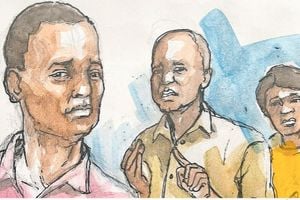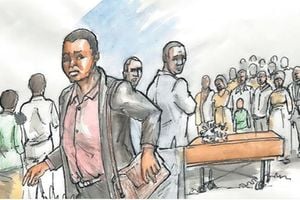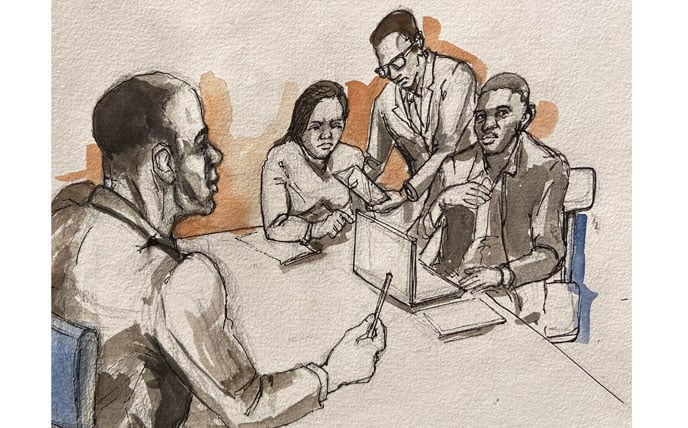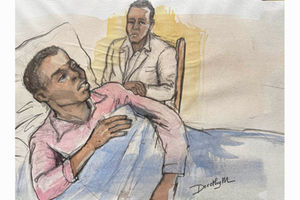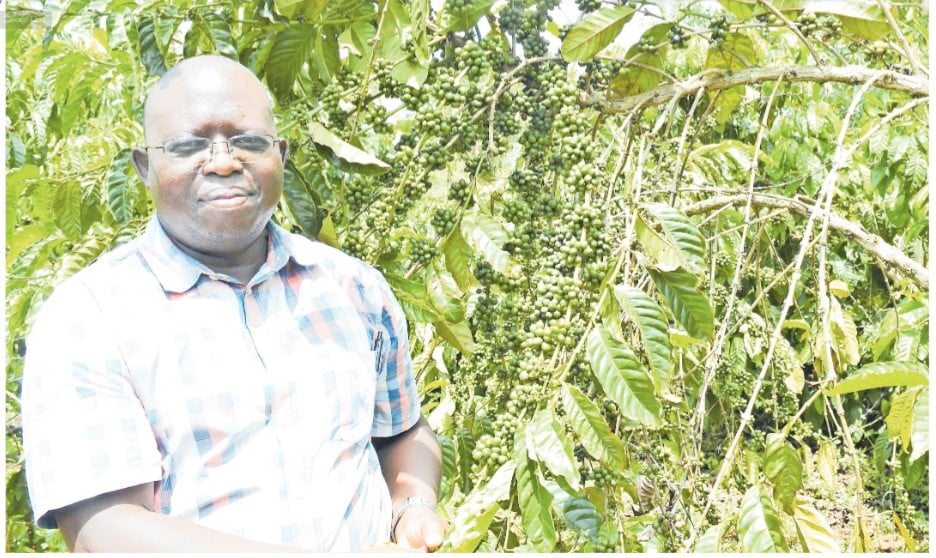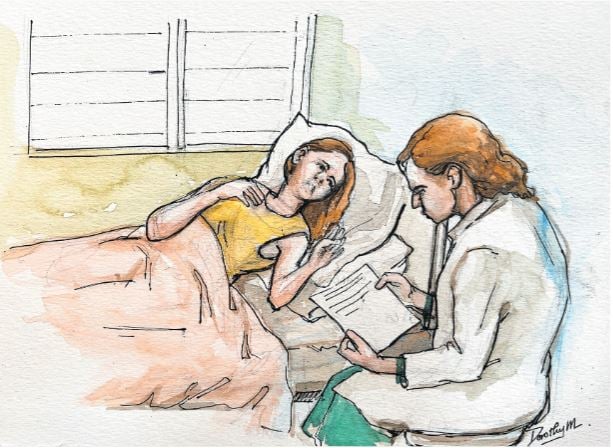
On the June 29, 2016, some police officers at Paicho Sub- County in Gulu District, stopped a lorry that was carrying people and their luggage. One of the passengers, a one Christopher Nyeko, was singled out by the police officers and asked to disembark from the lorry.
Nyeko had been on the watch list of the police and had disappeared after a crime had been committed in his locality in which he was the main suspect. There was a scuffle between the policemen and Nyeko shortly after he had disembarked. He fled into the surrounding thickets, while being pursued by the policemen, who kept firing live ammunition in the air.
Nyeko collapsed shortly afterward and he was arrested by the policemen, who found him gasping for breath. The police hired a motorcycle that carried him to the nearby police post. Unfortunately, he breathed his last upon arrival at the police post.
News spread like wild fire that Nyeko had been shot dead by the policemen, who had pursued him. An initial postmortem was carried out and the doctor said he could not establish the cause of death. This was widely believed to be a cover-up.
A human rights organisation hired a forensic pathologist to carry out a second postmortem examination and it was established that Nyeko did not sustain any bullet wounds, but had died from excessive bleeding when one of his blood vessels in the chest cavity ruptured.
The blood vessel had been weakened due to syphilis infection. The rapture of the weakened blood vessel was, however, attributed to the adrenaline surge that was a result of his flight and the subsequent gunshots.
Nyeko’s death was classified as one resulting from natural causes, but lawyers acting on behalf of Nyeko’s family, during the inquest, argued that the nature of Nyeko’s arrest and the unnecessary gunfire and the fright Nyeko experienced, were circumstances that triggered his death. The lawyers applied a legal principle known as the thin eggshell rule.
The eggshell skull rule, also known as the thin skull rule, is a well established legal doctrine that asserts that the frailty of an injured person is not a defence in the law of torts. The concept of tort law is to redress a wrong done to a person and provide relief from the wrongful acts of others, usually by awarding monetary damages as compensation.
The eggshell rule literally means that if a person had a skull as delicate as that of the shell of an egg, and another person, unaware of that condition, injured that person’s head, causing it to break, then that person would be held liable for all the damages resulting from that wrongful contact regardless of that person’s intention. The eggshell rule is also applicable in criminal law.
During the inquest into the death of Nyeko, court ruled that the policemen were not liable for his death. There was no proof brought before court that the police officers had provoked Nyeko into flight. Court was also satisfied that the police officers had acted within their constitutional mandate of apprehending suspects and had used reasonable force.
In not a dissimilar case, during the late afternoon of May 3, 1974, Robert Blaue entered the home of an 18-year-old woman, Jacolyn Woodhead and asked her for sexual favours. Woodhead refused his advances and Blaue attacked her with a knife, inflicting four serious wounds on her.
One of the wounds punctured her lungs. Her neighbours urgently called for an ambulance that took her to hospital and she was immediately admitted in the intensive care unit. An hour after her arrival in the hospital, she was examined by a specialist, who quickly established that the girl had suffered serious injuries and that she required surgery as a matter of urgency.
Woodhead had lost a lot of blood and needed a blood transfusion before surgery could be undertaken. As soon as the girl understood that the surgeon was planning a blood transfusion for her, she declined the transfusion on grounds that she was a Jehovah’s Witness.
To have a blood transfusion, she said, would be contrary to her religious beliefs, as a Jehovah’s Witness. She was told that if she did not have a blood transfusion, she would die. She said she did not care if she did die. She was asked to acknowledge in writing that she had refused to have a blood transfusion under any circumstances. She did so. She died the following day.
Blaue was charged with murder and wounding with intent to do grievous bodily harm. The main argument Blaue’s lawyers told court was that the girl died due to her refusal to accept blood transfusion rather than the stab wound itself. This meant that the stabbing did not directly lead to her death.
A similar case was cited by the prosecution; a man injured another man’s finger during a violent assault. A surgeon had advised that the victim’s finger be amputated noting that it posed a danger to the victim’s life. The advice was rejected. Two weeks later, the victim died of a tetanus infection. The question paused during this case was whether the wound or the tetanus infection was the cause of death.
Court ruled that he who inflicts an injury, which resulted into death cannot excuse himself by pleading that his victim could have avoided death by taking greater care of himself. A man who does a wrongful act is deemed legally responsible for the natural and probable consequences of that act. Courts do not want accused persons to rely on the victim’s own vulnerability to avoid liability.
Court concluded that the cause of Jacolyn Woodhead’s death was the wound in her chest cavity, which had not been brought about by any decision made by the deceased girl, but by the stab wound inflicted by Robert Blaue and he was, accordingly, convicted of manslaughter.
The judge had this to say, “It seems to court that if at the time of death, the original wound is still an operating cause and a substantial one, then the death can properly be said to be the result of the would albeit that some other cause of death is also operating”. This is not different from the “but for” principle often applied in law.
